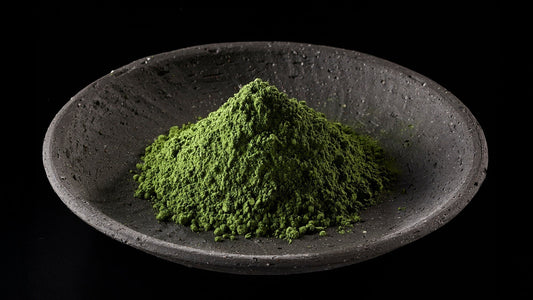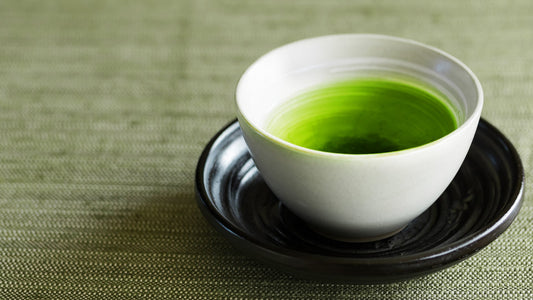What Is the Temomi Tea-Making Method That Has Been Passed Down for Over 300 Years?
The process of transforming freshly picked tea leaves into the tea we drink today began around 300 years ago with a method known as temomi—a traditional hand-rolling technique.
Here, we introduce the delicate art of temomi-cha, or hand-rolled tea, a craft that continues to be passed down through generations and is still performed entirely by hand.
The Traditional Craft of Temomi-Cha
Steaming (Jounetsu)

The process begins by exposing freshly picked tea leaves to steam. The heat from the steam halts the activity of oxidation enzymes, preserving the tea’s vibrant color and fresh aroma.
This steaming step—jounetsu—is the most critical stage in producing high-quality green tea.
Once steaming is complete, the meticulous hand-rolling process of temomi begins.
1. Leaf Separation (Haburui)
 This marks the initial stage of moisture removal from the tea leaves.
This marks the initial stage of moisture removal from the tea leaves.
Using both hands, the leaves are gently lifted and shaken down—a motion repeated continuously for 20 to 30 minutes until their weight is reduced by approximately 30%. The leaves are placed in a tray known as a jotan, a wooden frame lined with durable traditional washi paper. This tray is set atop a heated table called a hoiro, which warms the tea leaves from below, allowing moisture to gradually evaporate as the leaves become supple and warm to the touch.
2. Gentle Rotation (Keikaiten)

The tea leaves are rolled broadly from side to side, coaxing out moisture through repeated motion.
Rather than relying solely on fingertip movement, the tea artisan skillfully applies their body weight and the heat of the hoiro to gently evaporate the moisture over the course of 40 to 50 minutes.
As the process progresses, the rotation gradually slows, transitioning into a deeper kneading motion that leads into the next stage—deep kneading rotation.
3. Deep Kneading Rotation (Jūkaiten)

The heat is lowered, and the kneading begins with increased pressure.
The rolling width is narrowed, and the tea leaves are worked in a slow, deliberate motion—carefully kneading them to prevent overheating and preserve their delicate character.
4. Leaf Unraveling (Tamatoki)

From this point forward, the process shifts to shaping the tea leaves and enhancing their natural luster.
The gathered leaves are gently loosened and spread out in a woven basket to cool, where each leaf is carefully separated by hand—one by one—with utmost attention to detail.
5. Core Kneading (Momikiri)

At last, the final kneading stage begins.
The tea leaves are returned to the jotan, where they are gently pressed between both hands and rubbed back and forth in repeated motions. Over the course of approximately 60 minutes, this careful technique is performed again and again to shape the leaves into their signature slender, refined form.
6. Rolling Knead (Tenguri-Momi)

The tea leaves are gathered at the center of the jotan, then aligned and pressed vertically between both hands.
With controlled, circular motions, the leaves are gently rotated against one another for approximately 30 minutes—gradually shaping them into fine, needle-like strands.
7. Final Curling (Kokuri)

Once the tea leaves have been shaped into fine, needle-like strands, the final step is to bring out their natural luster.
The leaves are once again carefully aligned, then firmly gripped between both hands and rhythmically kneaded with alternating flexing motions—rotating and pressing them with controlled force, much like kneading artisanal bread by hand.
This process continues for approximately 90 minutes. When the leaves take on their elegant, uniform shape and a beautiful sheen emerges, the hand-rolling is complete.
8. Final Drying (Kansou)

In the final step, the tea leaves are spread in a thin layer over the jotan, which has been gently heated to around 60°C.
There, they are carefully dried to complete the process.
From the initial steaming process (jounetsu) to the final drying, the creation of temomi-cha takes approximately eight hours to complete.
While most green tea today is produced through mechanized processes inspired by these traditional techniques, only Japanese tea labeled as temomi-cha—hand-rolled tea—is crafted entirely by the hands of a tea master.
Today, only a small number of artisans remain with the skill to produce temomi-cha.
The selection of tea leaves suitable for hand-rolling varies by master, requiring not only years of experience but also an exceptional sensitivity of the five senses—sight, touch, smell, sound, and taste—to perfect this intricate craft.
In Japanese tea competitions—where visual beauty and flavor perfection are intensely pursued—many teas are cultivated using pesticides and chemical fertilizers.
As a result, the authentic taste of the tea leaves themselves is often overlooked or forgotten.
At Phenimax, we offer an unparalleled temomi-cha—hand-rolled tea crafted from organically grown, pesticide-free tea leaves.
This rare and exceptional tea is so exclusive that even within Japan, it is nearly impossible to obtain.
Savor the unique character of each origin: the color, aroma, and flavor, as well as the beauty of the tea leaves after infusion.
Experience the essence of Japanese craftsmanship in its purest form.
Explore more about our Japanese teas →









